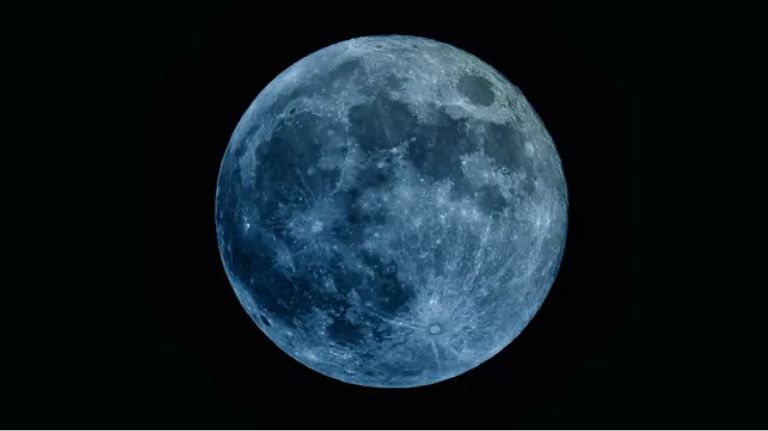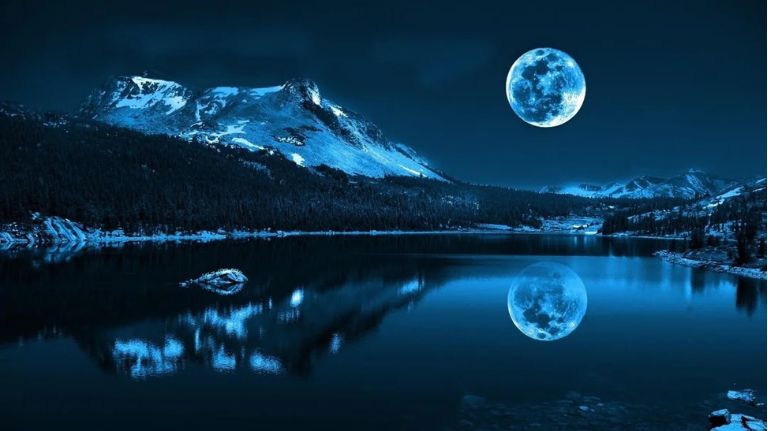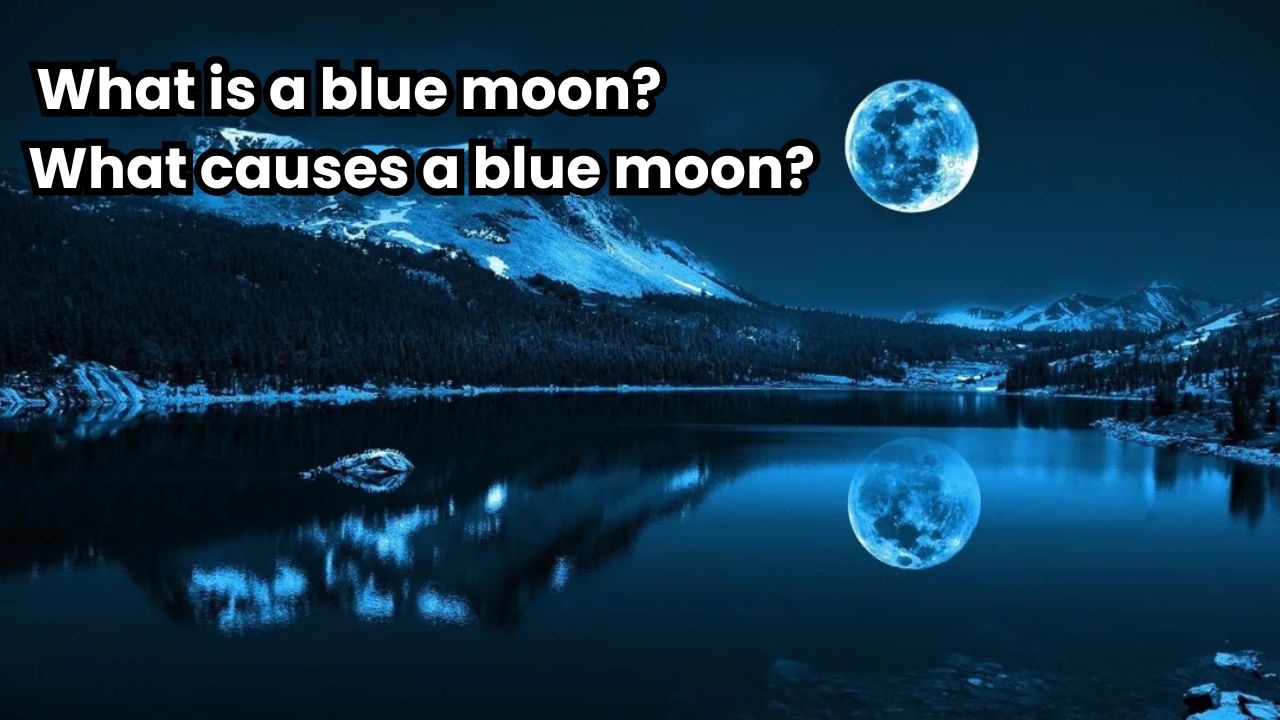The phenomenon of the blue moon is a fascinating celestial event steeped in folklore, science, and cultural intrigue. Often misunderstood and misinterpreted, a blue moon can mean the second full moon in a calendar month, the third full moon in a season containing four, or a moon appearing blue due to atmospheric effects. Despite its name, a blue moon is rarely actually blue in color, and its calendrical significance has evolved over the centuries. Exploring the following topics:
- What is a blue moon?
- Why is it called a blue moon?
- Is a blue moon actually blue?
- What causes a blue moon?
- When was the last blue moon in August 2024?
- What is a super blue moon?
- When is the next blue moon?
What is a Blue Moon?
A blue moon occurs under three distinct circumstances:
- Calendrical Blue Moon: The second full moon in a calendar month.
- Seasonal Blue Moon: The third full moon in a season with four full moons.
- Visually Blue Moon: A rare optical phenomenon where the moon appears blue due to atmospheric particles from volcanic eruptions, forest fires, or storms scattering light.
| Aspect | Calendrical Blue Moon | Seasonal Blue Moon | Atmospheric Blue Moon |
|---|---|---|---|
| Definition | The second full moon in a single calendar month. | The third full moon in a season with four full moons. | A visual phenomenon where the moon appears blue due to atmospheric conditions (e.g., after volcanic eruptions). |
| Frequency | Occurs approximately once every 2 to 3 years. | Less frequent, dependent on the number of full moons in a season. | Extremely rare, depending on atmospheric conditions. |
| Origin | Coined by James Hugh Pruett in 1946. | Originates from the Maine Farmers’ Almanac in 1937. | Happens when atmospheric particles scatter light, usually after volcanic eruptions or large fires. |
| Scientific Significance | No special astronomical significance beyond rarity. | No special astronomical significance. | Scientific explanation involves atmospheric scattering of light. |
| Cultural Significance | Associated with the phrase “once in a blue moon,” symbolizing rarity. | Less common in culture, but still considered rare. | Creates a breathtaking visual phenomenon that is rare and significant. |
| Predictability | Predictable, based on the lunar cycle. | Predictable, based on the number of full moons in a season. | Unpredictable, dependent on specific atmospheric conditions. |
| Examples | August 30, 2023 (second full moon in the month). | May 18, 2019 (third full moon in the spring season). | Blue Moon seen after Mount Krakatoa eruption in 1883, and after Mount Pinatubo eruption in 1991. |
Frequency of Blue Moons
Blue moons, as per the calendrical definition, occur about seven times in 19 years. This rarity has led to the phrase “once in a blue moon,” signifying an infrequent occurrence!
Why Is It Called a Blue Moon?

The term “blue moon” has evolved over centuries. The first recorded usage of the phrase dates back to 1528 in a satire titled Rede Me and Be Nott Wrothe, which mentioned believing absurdities like “the moon being blue.”
Modern Interpretation
The contemporary use of “blue moon” as the second full moon in a month was popularized by a 1946 article in Sky and Telescope. However, it was further cemented in popular culture through radio programs, trivia games, and children’s books in the 20th century.
Is a Blue Moon Actually Blue?
Despite its name, a blue moon is rarely blue. The phenomenon of a moon appearing blue occurs due to specific atmospheric conditions, such as volcanic ash or smoke from wildfires, which scatter red light and allow more blue light to reach our eyes.
Historical Instances of Blue Moons
- 1883 Krakatoa Eruption: Blue and green moons were reported worldwide.
- 1950 Muskeg Fires in Canada: Smoke particles caused blue moons visible in North America and Europe.
- 1991 Mount Pinatubo Eruption: Created similar effects.
What Causes a Blue Moon?
Calendrical Blue Moons
A blue moon happens because the lunar cycle (29.5 days) is shorter than the average calendar month. This mismatch results in two full moons occasionally falling within the same month.
Seasonal Blue Moons
In some cases, a season (as defined by equinoxes and solstices) may contain four full moons instead of the usual three. The third moon in such a season is termed a “blue moon.”
When Was the Last Blue Moon in August 2024?
The last blue moon occurred in August 2024, a calendrical blue moon, as it was the second full moon of the month.
Historical Significance of August Blue Moons
August blue moons are particularly significant because they coincide with summer, making them a popular subject for stargazers and cultural references.
What is a Super Blue Moon?

A super blue moon combines two rare phenomena:
- A blue moon (second full moon in a month or third in a season).
- A supermoon, which occurs when the moon is closest to Earth in its orbit, making it appear larger and brighter.
Super Blue Moon of 2023
The super blue moon on August 30, 2023, was observed globally. Its vibrant hue in some photographs was an optical effect, not its actual color.
When Is the Next Blue Moon?
The next blue moon is predicted to occur in May 2026 as a calendrical blue moon. Such occurrences are predictable, thanks to precise lunar cycle calculations.
How to Observe a Blue Moon
- Check Astronomical Calendars: Plan ahead to observe the event.
- Use a Telescope: Enhance your viewing experience.
- Ideal Conditions: Find clear skies and minimal light pollution.
Conclusion
The phenomenon of the Blue Moon captivates the imagination with its rarity and significance, though its meaning varies based on context. Whether as the second full moon in a month, the third full moon in a season containing four, or a rare atmospheric effect that gives the moon a blue appearance, the term encompasses a range of occurrences.
The calendrical Blue Moon, which occurs approximately every 2 to 3 years, is often the subject of popular curiosity. This definition, coined by James Hugh Pruett in 1946, refers to the second full moon in a single month. While this event is predictable and relatively common, it holds no astronomical significance beyond its rarity, giving rise to the phrase “once in a blue moon” as a symbol of infrequent occurrences.
The seasonal Blue Moon, stemming from the Maine Farmers’ Almanac in 1937, refers to the third full moon in a season with four full moons. This interpretation, though less widely recognized than the calendrical version, adds depth to the understanding of how the moon cycles relate to the seasonal calendar. The Maine rule, as well as its variations, such as the “astro-seasonal” rule, highlights the complex relationship between the full moon and the divisions of the year.
In addition to its calendrical significance, the atmospheric Blue Moon can occur when volcanic eruptions or large-scale forest fires introduce particles into the atmosphere that scatter light in such a way that the moon appears blue. This rare visual phenomenon, seen after events like the eruption of Mount Krakatoa in 1883 and Mount Pinatubo in 1991, occurs unpredictably but remains a breathtaking sight when it does happen. The conditions required for the moon to take on a blue hue involve precise atmospheric conditions, making this occurrence even rarer.
The myth and folklore surrounding Blue Moons, particularly the saying “once in a blue moon,” emphasize its perceived rarity, whether in its calendrical, seasonal, or atmospheric forms. These occurrences, although scientifically explainable, continue to inspire wonder and intrigue across cultures, keeping the Blue Moon a symbol of the extraordinary in our world of cyclical, predictable patterns.
Ultimately, the Blue Moon’s allure lies in its ability to blend science and folklore, creating a fascinating intersection of natural phenomena and cultural interpretation. Whether you’re admiring the rarity of a second full moon in a month, exploring the seasonal significance, or witnessing the moon’s atmospheric transformation, the Blue Moon will continue to enchant and mystify for generations to come.
for more amazing facts stay with us
NASA’s Search for Aliens Life: The Voyager Missions
Read our previous article: NASA’s Search for Aliens Life: The Voyager Missions
